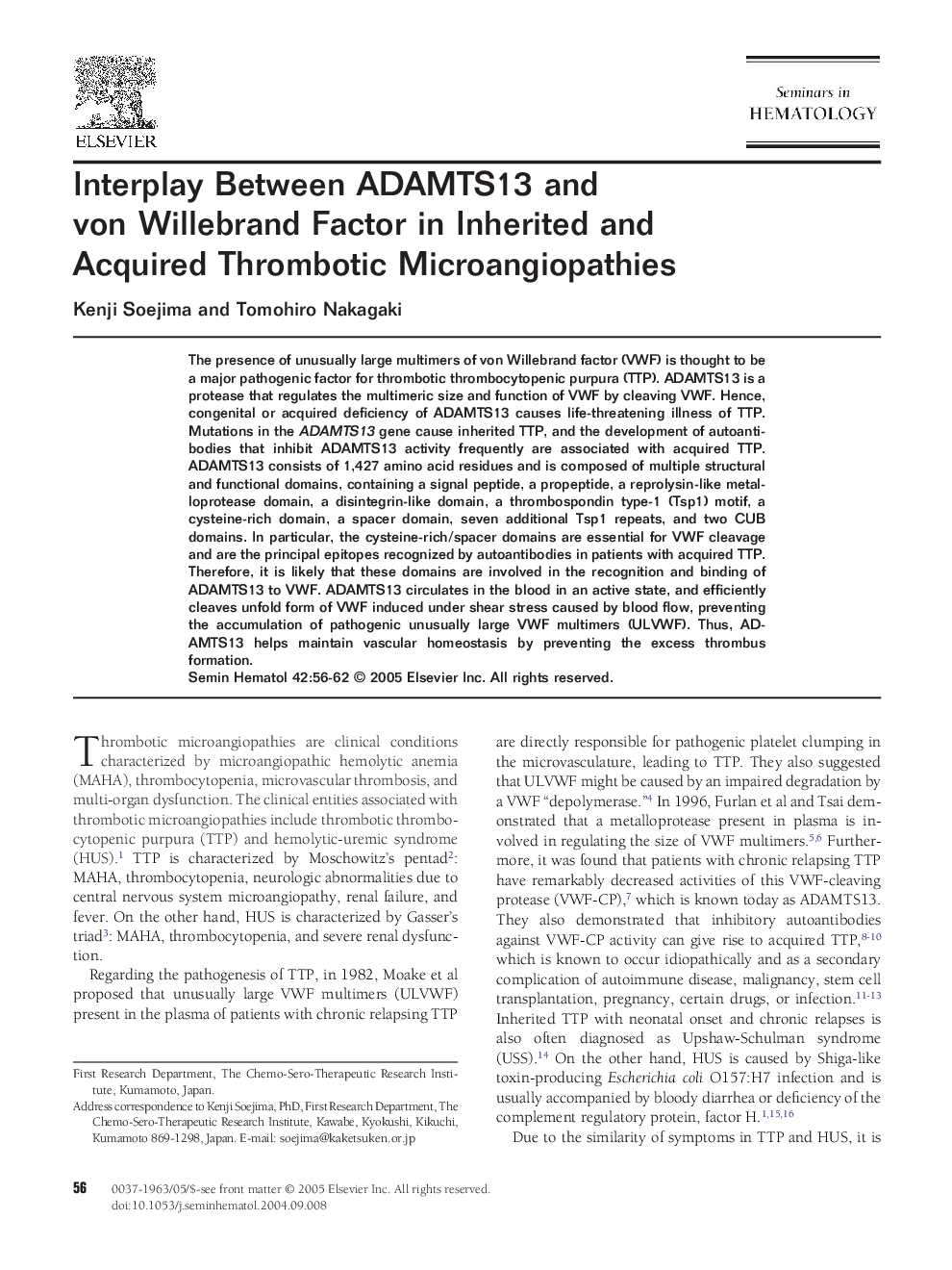| Article ID | Journal | Published Year | Pages | File Type |
|---|---|---|---|---|
| 9258425 | Seminars in Hematology | 2005 | 7 Pages |
Abstract
The presence of unusually large multimers of von Willebrand factor (VWF) is thought to be a major pathogenic factor for thrombotic thrombocytopenic purpura (TTP). ADAMTS13 is a protease that regulates the multimeric size and function of VWF by cleaving VWF. Hence, congenital or acquired deficiency of ADAMTS13 causes life-threatening illness of TTP. Mutations in the ADAMTS13 gene cause inherited TTP, and the development of autoantibodies that inhibit ADAMTS13 activity frequently are associated with acquired TTP. ADAMTS13 consists of 1,427 amino acid residues and is composed of multiple structural and functional domains, containing a signal peptide, a propeptide, a reprolysin-like metalloprotease domain, a disintegrin-like domain, a thrombospondin type-1 (Tsp1) motif, a cysteine-rich domain, a spacer domain, seven additional Tsp1 repeats, and two CUB domains. In particular, the cysteine-rich/spacer domains are essential for VWF cleavage and are the principal epitopes recognized by autoantibodies in patients with acquired TTP. Therefore, it is likely that these domains are involved in the recognition and binding of ADAMTS13 to VWF. ADAMTS13 circulates in the blood in an active state, and efficiently cleaves unfold form of VWF induced under shear stress caused by blood flow, preventing the accumulation of pathogenic unusually large VWF multimers (ULVWF). Thus, ADAMTS13 helps maintain vascular homeostasis by preventing the excess thrombus formation.
Related Topics
Health Sciences
Medicine and Dentistry
Hematology
Authors
Kenji Soejima, Tomohiro Nakagaki,
